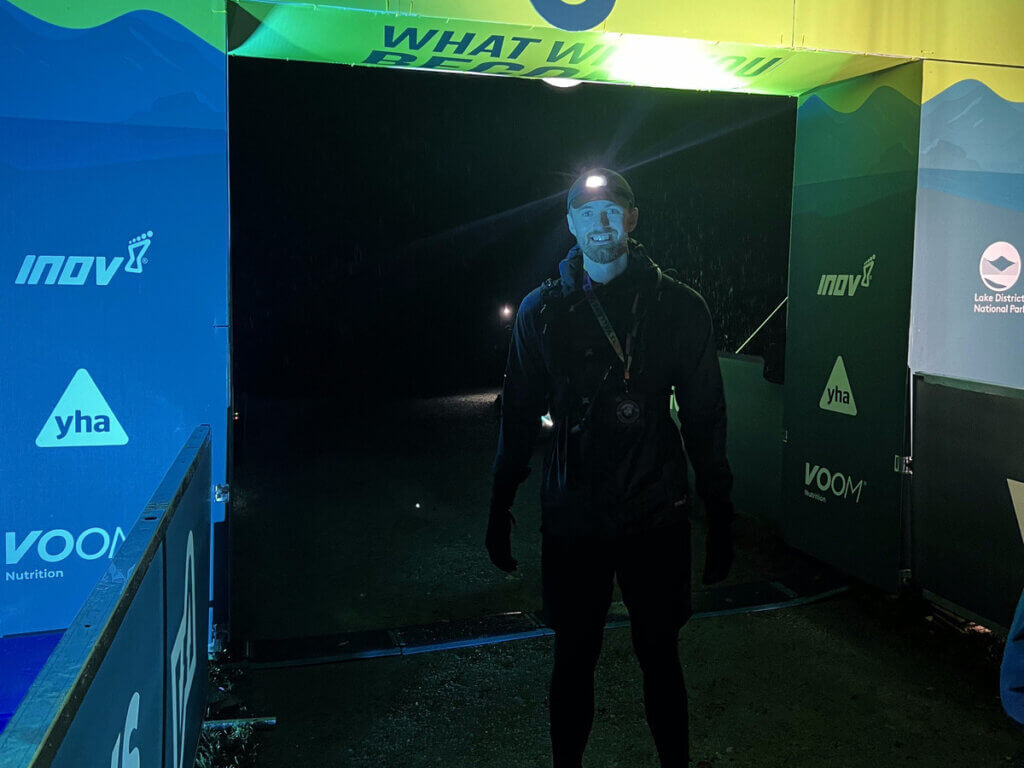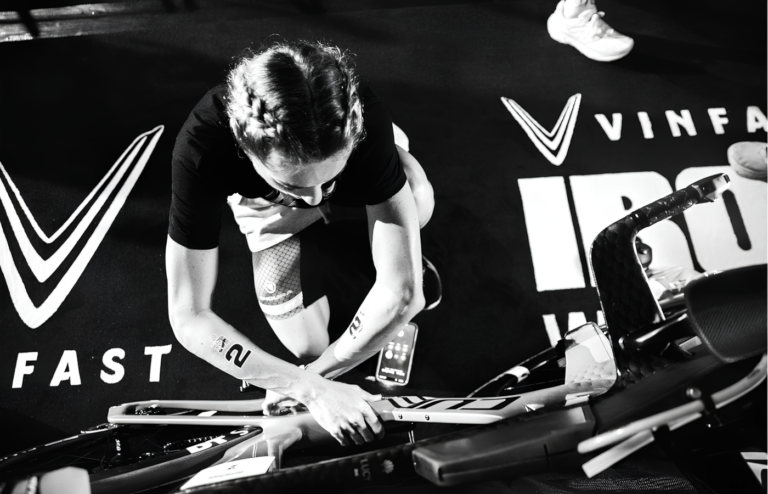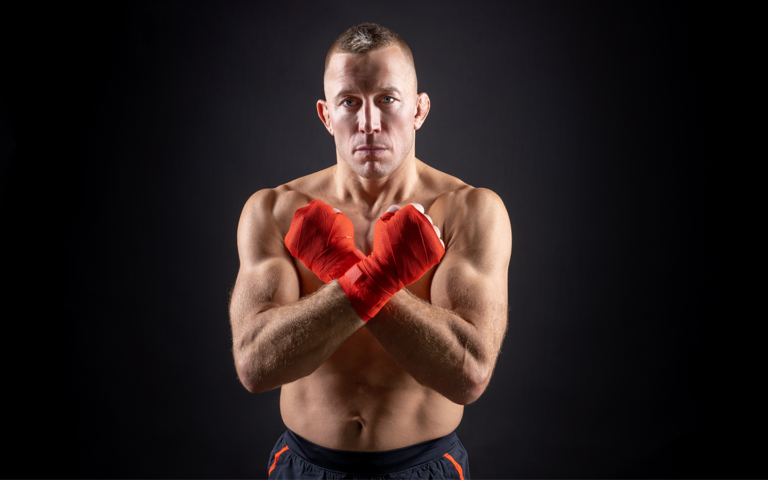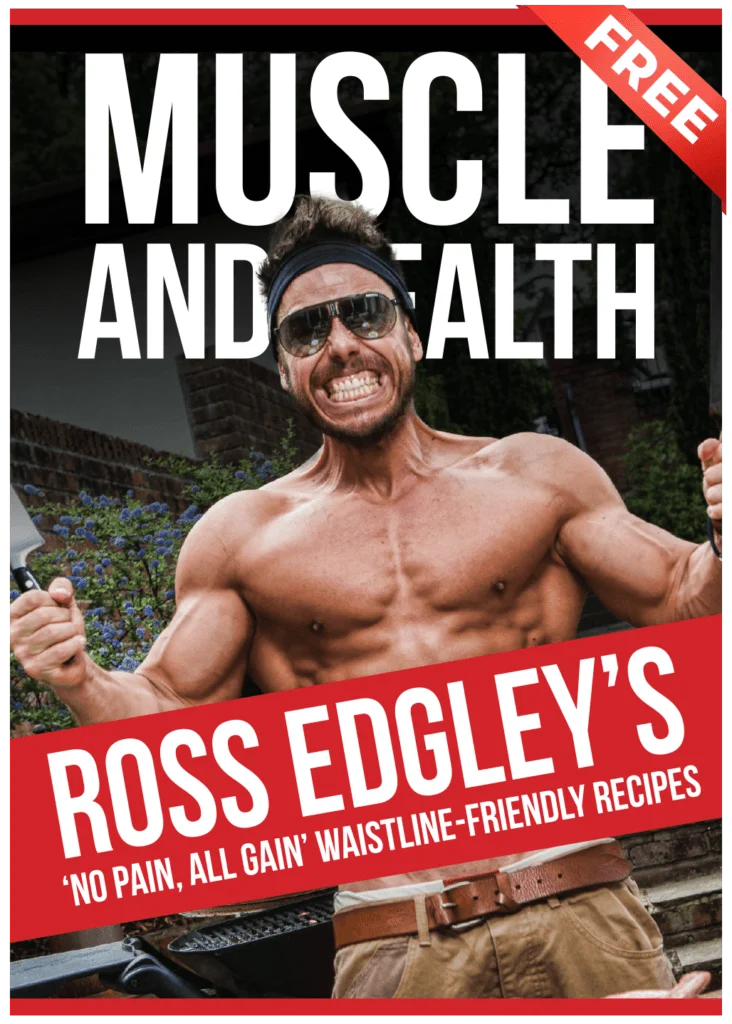The time is 6.03 a.m. on a Sunday morning. Skies remain dark, a downpour of Cumbrian drizzle remains consistent, and the number of meandering sheep in a nearby field outweighs the number of people awake, ready for their ‘day of rest.’
While the majority edge towards exiting their resting state, my lip quivers at the sight of floodlights over the crest of one final incline—my literal pot of gold at the end of a rainbow. My light is at the end of a tunnel with some punishingly dark periods.
It’s a moment that regularly jumped the queue among many unorganized and chaotic thoughts during the previous 24 hours. Now it’s arrived, and overwhelming feelings of confusion, elation, relief, gratitude, and pride take over. Tears inevitably follow, and I never cry.
This is the effect 100km of trail running—punctuated by over 12,000 feet of persistent elevation gain—can have.
I embarked on a quest to discover the ‘why’ of ultra running, naively jumping in at the deep end and selecting a route seasoned trekkers described as the “toughest challenge they have ever done.”
A relentless barrage of sharp inclines and deceptively treacherous declines may have been the headline acts, but endless tracks of uneven terrain and swamp-like fields deserve honorable mentions.
Spoiler alert: I didn’t discover the “why.” Upon asking one runner after almost 43km of effort, she replied, “When you find out, can you let me know.” None of the 500-plus runners who took part across the four editions of the inaugural 13 Valleys Ultra will ever gain such knowledge.
While an answer will forever evade the majority, they’re unlikely to endure sleepless nights over it because of ultra running’s ability to provide an experience that teeters on the edge of mental therapy. All the while, such epic feats of endurance force the mind and body to exceed limitations that are inconceivable to friends and families anxiously tracking on phones.
Finding the “why”
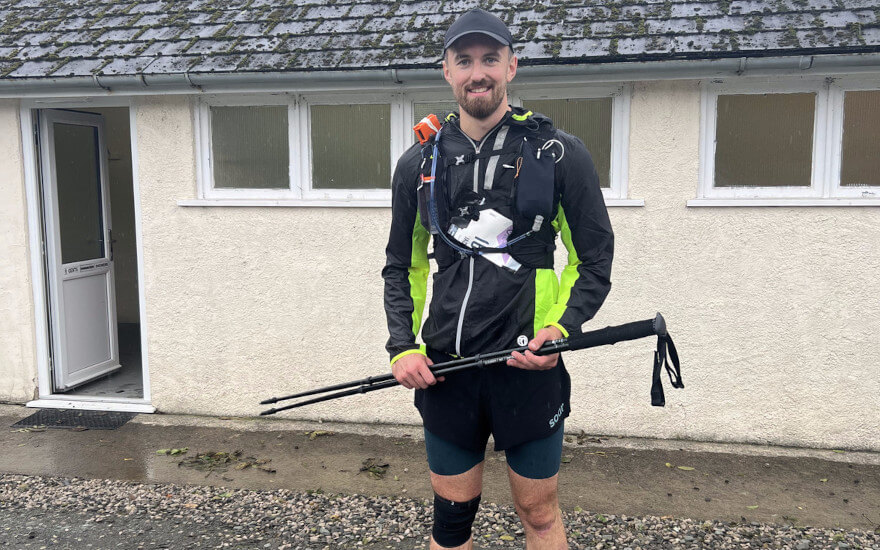
Running 100km over an entire day is a complex journey—so much dissolves away into distant memories when the monotony of simply putting one foot in front of the other places the brain into a vegetative-like state.
It’s epic. But it hurts like hell.
It’s lonely. But you meet and chat with some great people.
It’s soul-destroying. But it lifts you up when you think you’re beaten.
It’s running. But it’s mostly a mix of plodding, walking, and hiking.
24 hours before crossing the finish line, I was blissfully unaware of all of this, snuggled amidst a sea of bodies and awaiting the signal to start my Garmin watch, which I envisaged lasting the entire race. How wrong I was.
With around 1000 calories worth of porridge and a bagel providing me with the carbohydrates to start strong, the first phase of the race went without incident.
“This isn’t too bad,” I recall muttering as I conquered the first uphill climb, a minuscule and frankly pathetic grass verge compared to the behemoths on the horizon.
Upon reaching the bank’s top, I glanced back to assess the surroundings, taking in a wondrous view of the day beginning its transition into a crisp Autumn sunrise. Below, twenty to thirty lights bobbed along in formation like a rank of soldiers marching toward battle.
Spirits were naturally high heading into the first of seven feed stations: a combination of cozy village halls and outbuildings, transformed into sugar kingdoms for one weekend only. After grabbing several handfuls of Skittles and jelly beans, I departed Stickle Croft, aware that the first actual ascent wasn’t far away.
Breathtaking views of the first valley took my mind off the inevitable lactic acid-fueled party, as did a runner who wore denim shorts for the challenge—a choice I desperately wanted to query. Still, I was unaware of ultra etiquette and social boundaries at that stage.
The power of connection and community
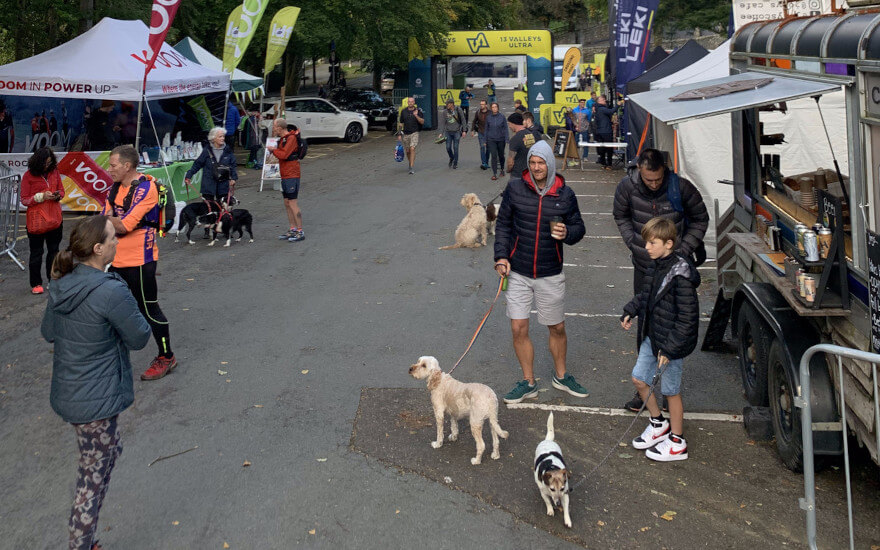
Using my denim friend as a pacesetter, I whipped out my walking poles. I surveyed the upcoming task, my neck craning further back as I watched tiny dots representing fellow runners stomping up a virtually 90-degree cliff face like a colony of ants.
I’m no expert or seasoned climber, but my experience of traversing some of the tallest peaks the United Kingdom has to offer aided me as I eventually stood atop Rossett Pike, albeit a flapjack and energy gel down, given the amount of sweat now gleefully sliding down my forehead.
My preconceptions of ultra runners and ultra races being purely insular and self-motivated quests began to erode away as I started to take in the passing conversation of others. I soon realized that it’s simply not possible to run 100km without making connections and engaging your brain in something other than reaching the end.
After going what felt like an eternity without speaking, I chatted to two chaps about other races and preparations, with a particularly sprightly runner from Nottingham telling me he still had the remnants of cobwebs hanging from him after a heavy stag do in Bristol the previous weekend.
Despite only classing himself as a runner for three years, he was now into double figures in terms of ultras—the passion for the sport visibly seeping out of his skin. He was entirely in love with ultra running, although by that stage, I was drastically unaware that ultra running doesn’t always give love back in return.
The other chap I engaged with immediately clocked my accent and coined me with the nickname ‘Fake Geordie’ given my roots in Durham, just south of the North-East’s hotspot. More on him later.
Injury and complications always lurks around the corner
Swiftly after running ahead after running out of social steam, a technical and knee-cap shattering ‘off the grid’ descent into Rosthwaite forced runners to skip between enormous boulders, carefully selecting a safe and traversable path like something from a level on Crash Bandicoot.
In the haste to spot the conclusion of a horrendous steep final section, I took my eye off the game for a split second, which saw me lose my footing and end up at the mercy of Earth for the first of many times to follow.
Unharmed and only slightly embarrassed, given the large section of public climbers making their way up, an older runner in front of me double-checked my condition before continuing. Sadly, I overheard the same man being forced to pull out after 43km with his knee resembling a gobstopper.
Unsurprisingly, he was not alone in being forced to throw in the towel due to injury. The unforgiving terrain requires immaculate footwork and rapid coordination, so much so that the mind never gets sustained rest while moving. One slip and a sprained ankle could follow. Relax too much, and your muscles strain beyond repair.
Feed station two was reached without further incident. Although a sense of cramp did begin to settle inside my left thigh, it was swiftly eradicated after more electrolytes, sugary treats, and some flat Coca-Cola—an ultra-running staple.
Pushing past the tough stuff
Another long and arduous climb in the shape of Lining Crag set the alarm bells ringing in my head, the first occasion the magnitude of the task ahead truly dawned on me, with the near 2000 ft slog up a stair master resembling path zapping the energy from my legs and lungs.
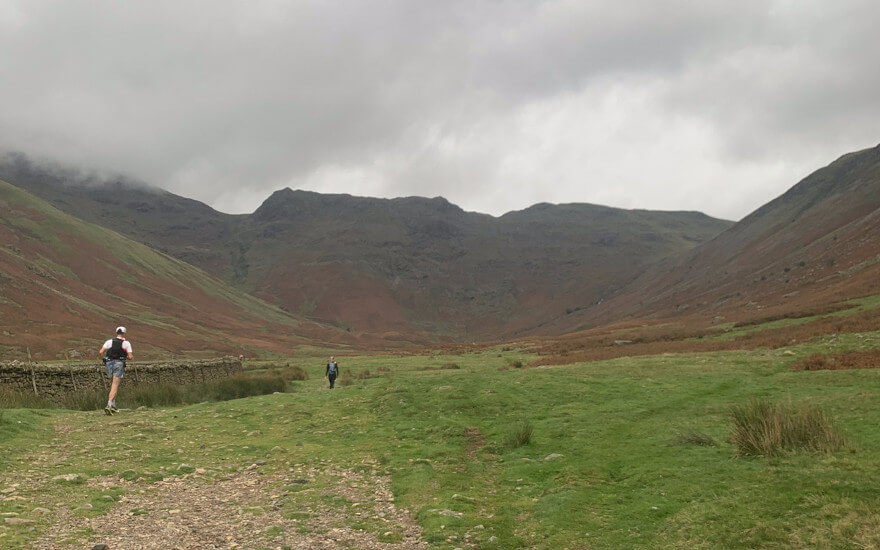
Fatigue began to kick in after seven hours—already the most prolonged duration I’d spent on my feet following a 55km ultra in 2021—as I scrambled gingerly over several false summits before finally starting the descent to Grasmere.
By this point, the forecasted rain began to soften the already loose ground, with the swamp-like conditions and thickening fog resembling a scene from The Hound of the Baskervilles. Shoes were sucked into the Earth like quicksand, making movement painfully slow and ponderous, with the route becoming increasingly desolate and requiring a more focused approach to navigation.
The plan had always been to change clothing halfway through the race, but the temptation to jump the gun and put on a fresh pair of socks was deafening. However, after wandering out of the sunken bog, the halfway stage became increasingly tantalizing. All I could think of was a scalding hot tea wrapped around my pruney fingers.
As civilization drew nearer, the sound of cars and sights of tarmac and homes became hypnotic, a mirage-like vision given the amount of time spent surrounded by nature, and two miles before a genuine town would greet me with open arms—a familiar voice sounded out behind me.
A few laughs go a long way
“You’re the fake Geordie with the dodgy knee?” From what seemed an eternity ago, the previously mentioned ‘other’ chap had caught up with me, his sarcastic humor reminding me that life once existed and will continue to after I’ve put the walking poles into retirement.
Chris White, or to give him his proper runner identity, Number 308, would become a familiar face for the rest of the journey, a self-proclaimed ultra addict originally from the seaside town of Skegness, but now living in the Cotswolds.
I would join Chris and a more subdued runner from Brighton—whose brother was many kilometers ahead despite promising to run in sync with his sibling—until we arrived back in Waterhead, where the race began. Without a doubt, this was a moment that felt like it was weeks ago despite it being only eight hours since the first step.
Now feeling more settled and aware of the need to engage regularly with fellow adventurers, I thought it was the appropriate time to ask the question I hoped to find the answer to upon crossing the finish line. “Why?”
Neither Chris nor Number 226—Clare McArthur—had the answer, greeting my interrogation with smirks shrouded in deja vu. It’s not the first time a rogue traveler will pose the question, and it certainly won’t be the last
An unlikely ‘Arrival’
Chris likened an ultra to the film ‘Arrival,’ a 2016 mind-bending film about extraterrestrial beings landing on Earth; its plot centered around the pillars of communication, language, time, and determinism.
That wasn’t the answer I was expecting either.

But it made sense when he started to connect the dots. Based on the 1998 short novel “Story of Your Life” by Ted Chiang, the narrative is non-linear, with past and future events scattered on the cutting room floor, the central character discovering that they can’t stop the passage of time and from feeling pain.
Ultimately, the film does bear similarities to an ultra-run at its core. The main character is brave, confident of their path, and ready for the future, even though they know it will bring them pain. Every ultra runner is the main character in their tale, often visualizing the moment they reach the promised land of the home stretch.
A tale of two halves
That idea became more evident and made more sense as the race ticked into the second half. Chris described the whole event as effectively two races: the first of which benefits from fresher legs and daylight, with a darkness-filled graveyard shift to follow, signifying the actual start of the challenge.
Rejuvenated with a fresh set of clothing and the news that the route has been changed due to the impending bad weather, I set off towards a slightly less elevated next stage, which heavily contrasted the bustling town center of Ambleside, the subtle nods and “well done” comments from tourists and locals shooting motivation into my veins.
Music is the motivator
I had even dipped and dodged into several shops the town offers, desperately begging for a set of fully functioning headphones after mine had died many miles ago. Still, with no such luck, I opted to blast out a pre-made playlist up a steady climb to Scandale Pass.
‘Champagne Supernova’ by Oasis crescendos poetically as I reached the top where two race volunteers were stationed, a small tent their solace, making for an ideal retreat from the worsening conditions.
Nightfall began to creep in ahead of the next feed station, a one-mile uphill detour from the route due to the last-minute change, which felt like a cruel climb towards much-needed calories and warmth.
The Filter House—initially built in 1926 to cleanse the water supplied by Hayeswater to the nearby market town of Penrith—was by far the most isolated and rural of the seven feed stations. Here, I learned of the day’s football scores and glared at a nearby laptop like it was a finding from Area 51.
Fatigued and sodden runners trickled in behind me while others left following a warm bowl of soup, chunks of chorizo, and a handful of ready-salted crisps.
While I may have physically felt okay, given the race was now entering the final 15 miles, the day’s tiredness was catching up, leading to me pouring a full CamelBak of hydration water all over myself after incorrectly fastening the pouch. I would have been embarrassed had that emotion not dwindled away.
Finding vision in the darkness
With one monumental climb still looming significantly in the blackness of the silhouetted mountain ridges, I took stock and made a voice note to remind me of my first experience of running in the darkness. “I definitely feel more alone. The dark swallows you whole and forces you to focus more.”
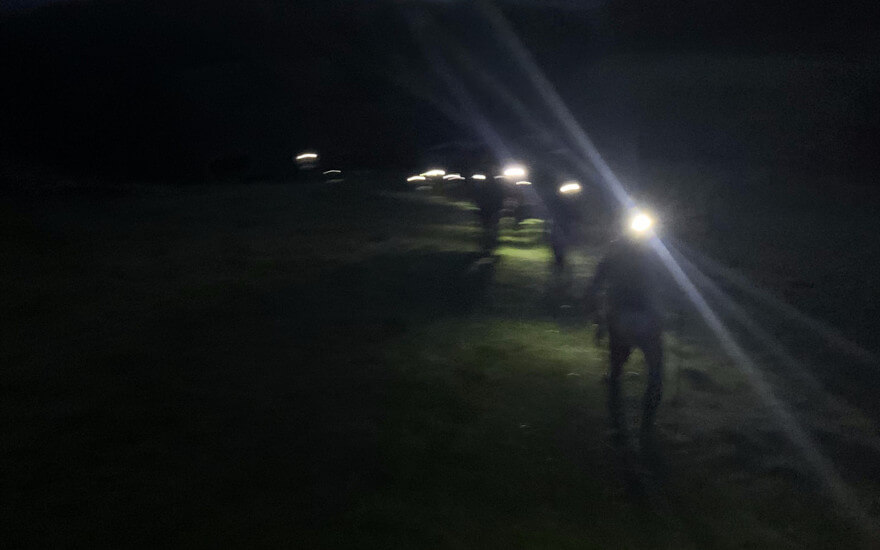
That sense of isolation was to grow significantly in the next three miles.
Up to that stage, the ultra felt tough. It felt demanding. It felt enchanting at times. But it never felt despairingly bleak. Sticks Pass, reaching a height of almost 2500 ft, was about to change that.
The climb wouldn’t have felt so punishing had it not been for the preluding feed station immediately before being so peaceful and cozy—a direct contrast to the upcoming gale force winds and exposed slopes.
The old-fashioned fireplace, which left my cheeks red and rosy, seemed like a fever dream an hour later, a gust almost knocking off my feet into an old abandoned mine following a lapse in navigation. Guided by small square markers and reliant on spotting the reflective circles that speckled in the dark like beacons of hope, I marched on to the summit.
But that was the easy part. It would be interesting to know if ultra runners prefer the inclines to the declines because my shins, knees, feet, toes, and thighs were now at the point of no return, battered and bruised from kicking rocks and so fatigued it was difficult to fully stand tall.
Now, spitting for almost 12 hours, the rain had transformed a treacherous and steep downhill section in Legburthwaite into a mudslide. Time after time, my footing would go, each fall more disheartening than the last, every single one chipping away at my dying motivation. If there was ever a stage that I would have flown the white flag—this was it.
Conquering the wall
On the verge of tears and externally questioning why I had decided to put my body and mind through such an ordeal, I was more than happy to catch up to two head torches—one of which was clearly going through something a lot worse than myself.
Number 109—a Lakes local called Andrea Benson— was in trouble, struggling to put her feet where they needed to go due to a severe lack of energy and calories.
Luckily, she was guided by Chris, whom I had recently seen at the previous feed station. He got her to flat ground, where she was greeted by two members of her family.
Hunched over and heavily emotional, Andrea seemed shot. Her body had given up on her, it seemed. In my mind, she was done. I needed to be more accustomed to the sheer willpower of ultra runners.
A little help from my (ultra) friends
After consuming energy blocks, gels, some solid food, and electrolytes, Andrea and Chris plowed on—now with me as the third member of their pack for the final 20km.
It felt good to be with people again. What is a journey if it still needs to be shared to some extent?
Andrea miraculously recovered, shooting ahead and discovering a new lease of life as well as a fresh mindset. She was built for these moments, her body boomeranging back into operation and her mind revitalized for one final push to the concluding feed station.
Threlkeld was welcome, even in the pouring rain at 2.30 a.m. As volunteers scrambled to help with offerings of hot drinks and soup, I sat and stared at the clock in the village hall, realizing time had become futile. Everything becomes irrelevant when you simply have one sole goal and focus. Tunnel vision takes over.
Tunnel-visioned and ready for glory
And this tunnel was almost at its end, a steady climb that wrapped around the edge of Lonscale Fell: the final stage before a descent into Keswick and glory.
With no energy left to communicate, I trudged at the back of the pack, my walking poles now feeling like an extension of my arms.
Andrea zoomed away into the distance, her head torch foreshadowing the final direction towards the North Star. That left me almost disbelieving in making our way into the last two miles, a fact I almost shed a tear at when he checked his watch.
So many thoughts rolled through my brain on those last steps. Reflections of the journey. Pride of staying in the game for so long. Curiosity as to why anyone would willingly opt to do this again. I stood at the start line, blissfully unaware of the scale of the event. Naivety can be a remarkable tool in your armory.
But one thought overpowered the others, and it was an answer to the question of “why” Clare had given me fourteen hours and 60km ago.
“Ultra running is a metaphor for life. You can be on the go for up to 24 hours, a full day. Throughout that time, you will encounter highs and lows. You will meet people. You will stay friends with some of them, and you will meet others and move on. You might be in the pain cave, but you can escape it. It encapsulates the full range of human emotions.”
Never has anything been more accurate and relatable, but it took me many hours and steps to fully appreciate it.
Crossing the line—in company
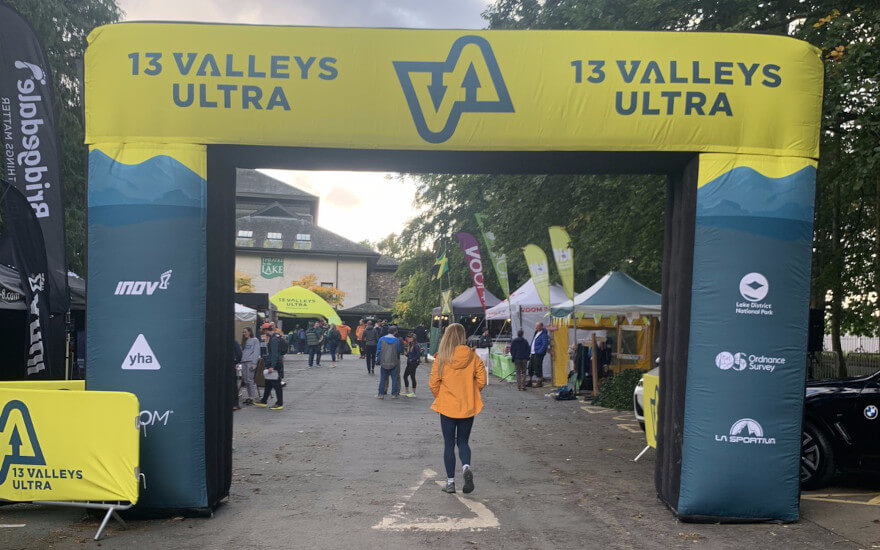
I arrived in the Lake District alone, began the race alone, but finished alongside a fellow runner—one I would have struggled to finish had he not been so accommodating. I had learned so much about the ultra community, gained a newfound respect for their elite mindset, and discovered that the mind is a powerful tool.
In 24 hours and 40 seconds, I crossed the line. Job done.
Emotionally drained, exhausted, and with the prospect of DOMS, it was time to put down the walking poles, both of which I’ve come to love despite our bickering along the way.
Ultra trail running will only be for some, and it’s easy to see why—but, its community and popularity are continuing to grow. Between 2008 and 2018, there was a 350% jump in participation. That number has no doubt risen since.
Sitting in a warm office days after the run and having digested the experience, I feel different. If I can conquer such a feat, there’s no need to worry about any challenge ahead.
That’s the power of ultra running.
While you won’t find me signing up for an event like that anytime soon, the 13 Valleys will forever hold a place in my heart, an odyssey I will remember over pints in pubs for years to come.
I set out to find the ‘why’ of ultra running, but the ‘why’ found me.
You can sign up for the 2024 13 Valleys Ultra Run here.

